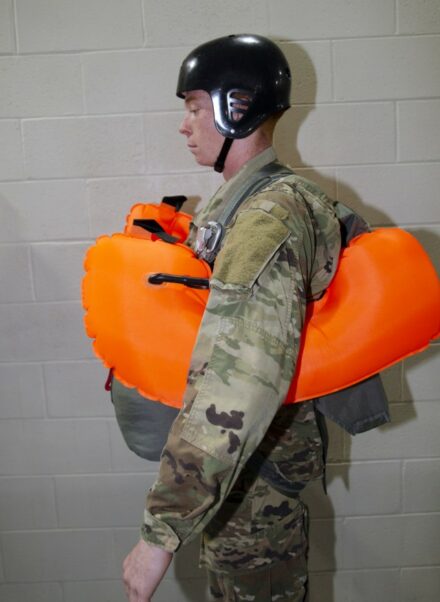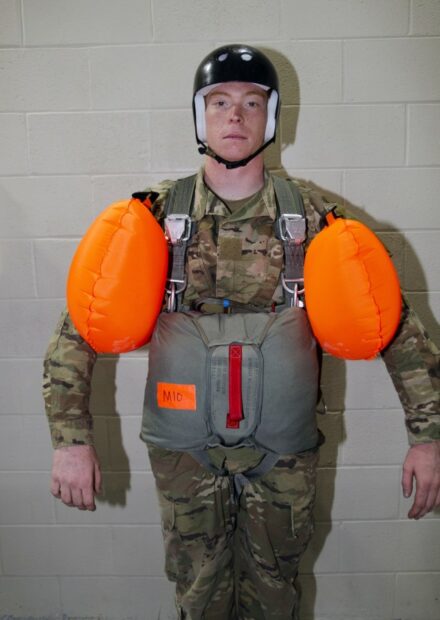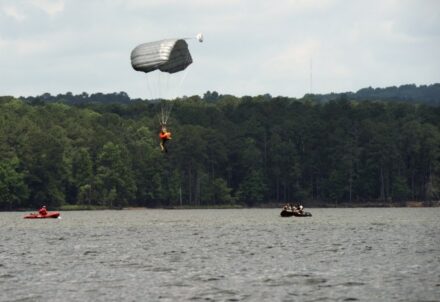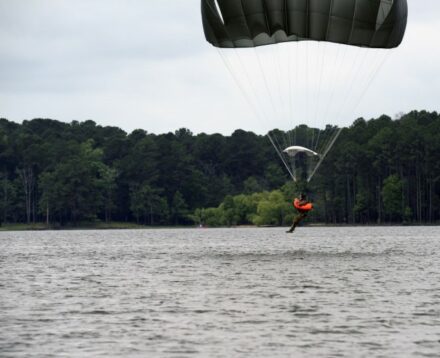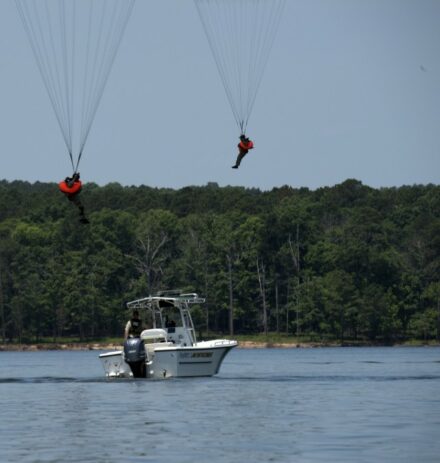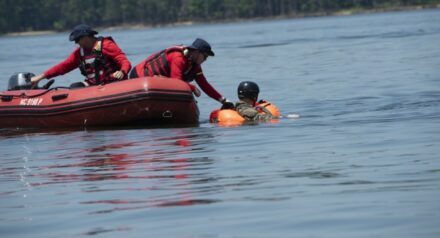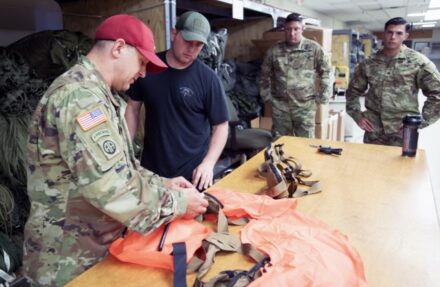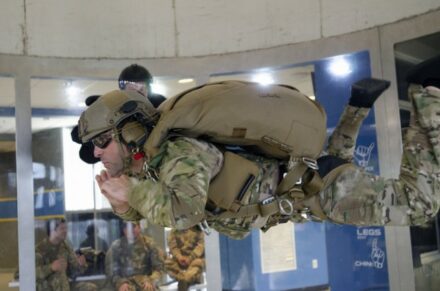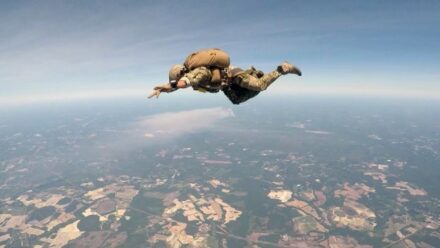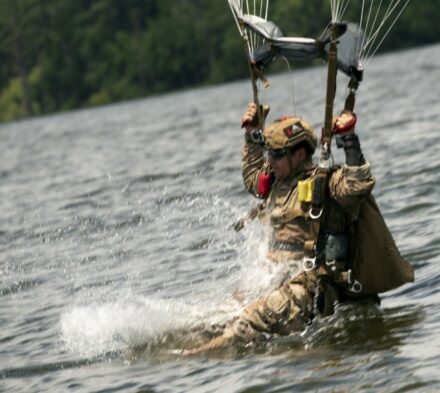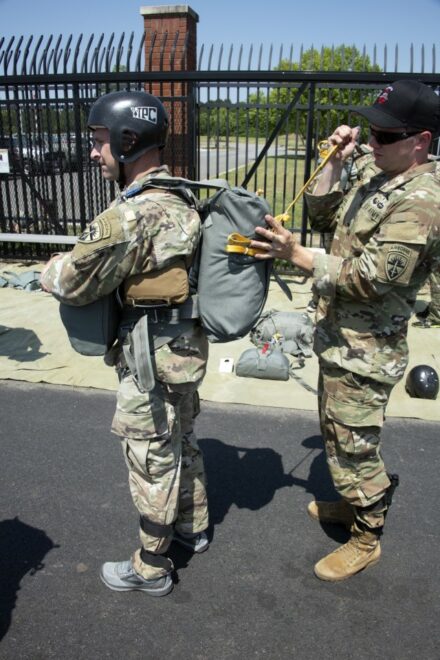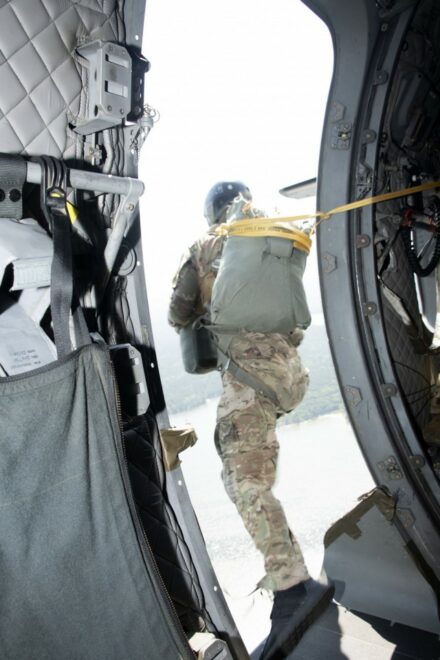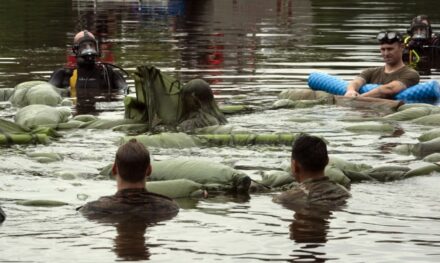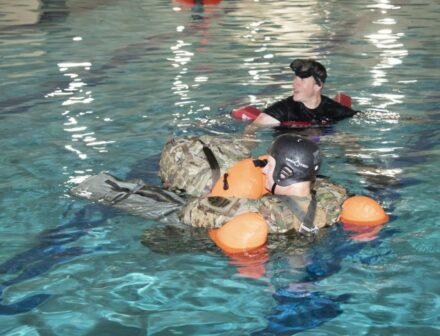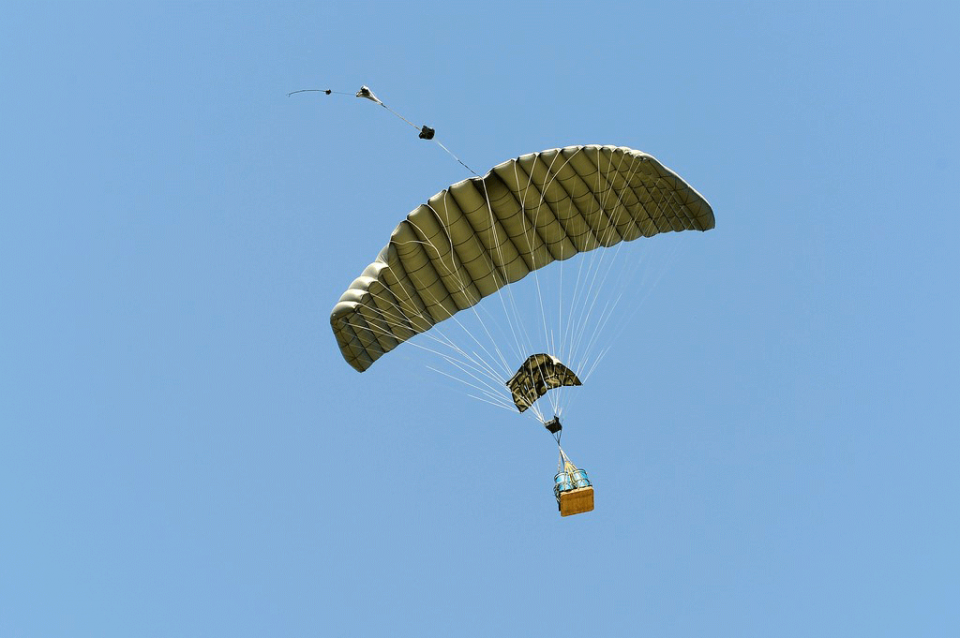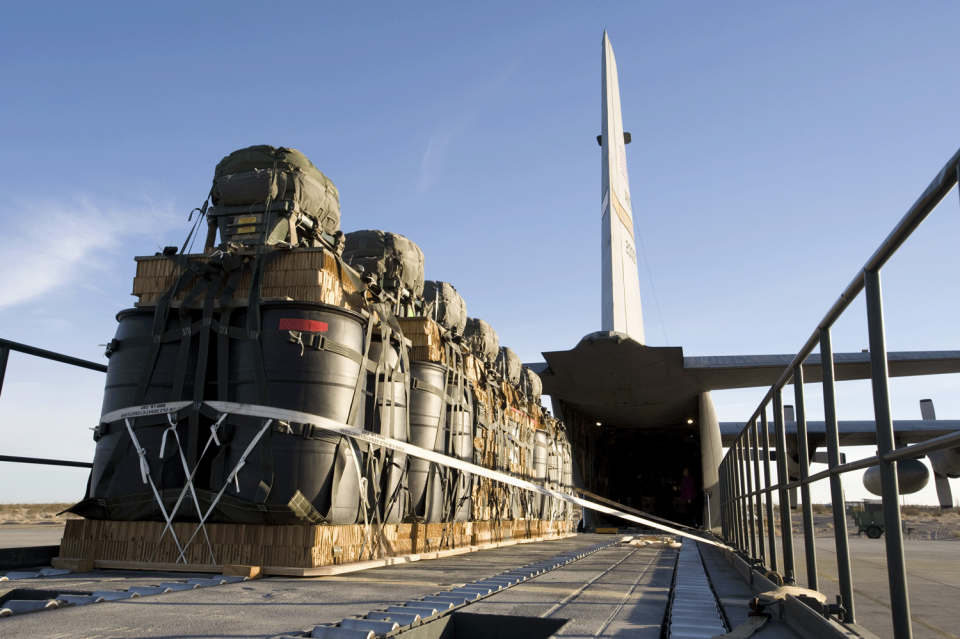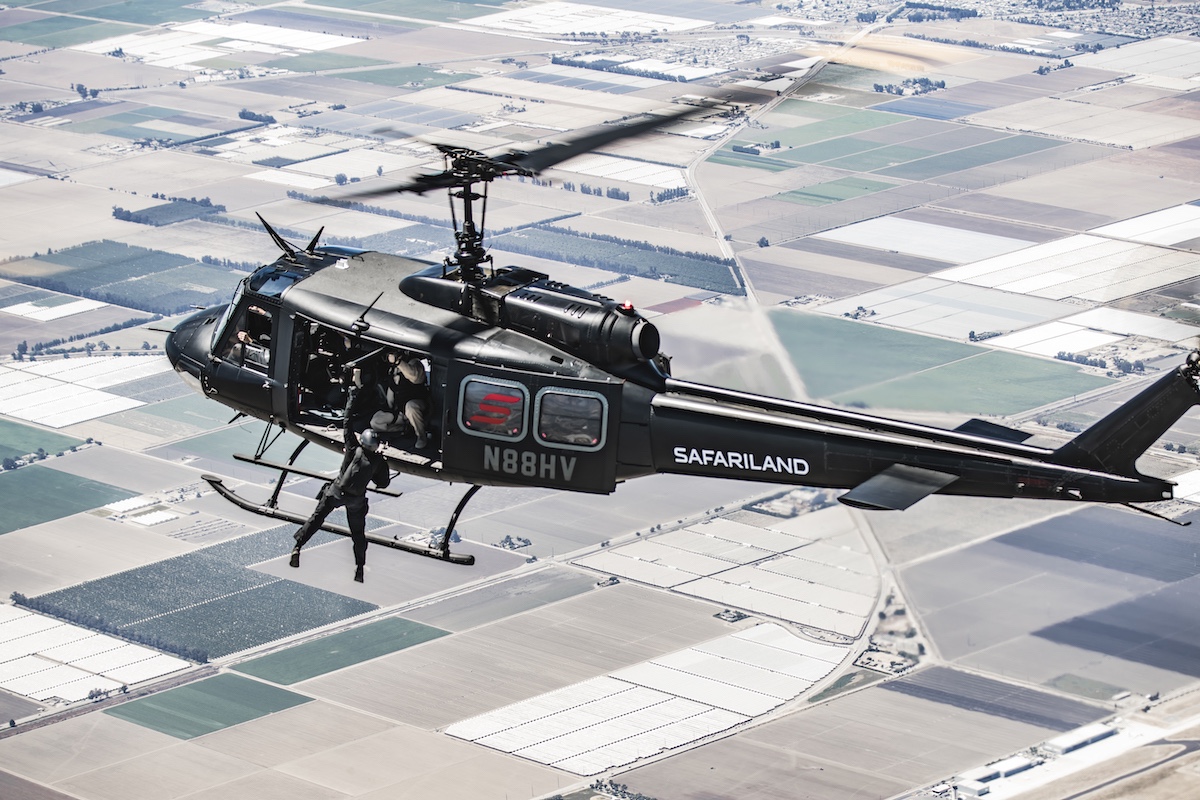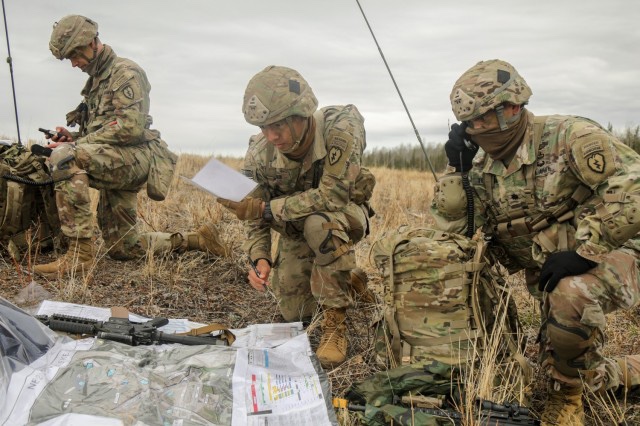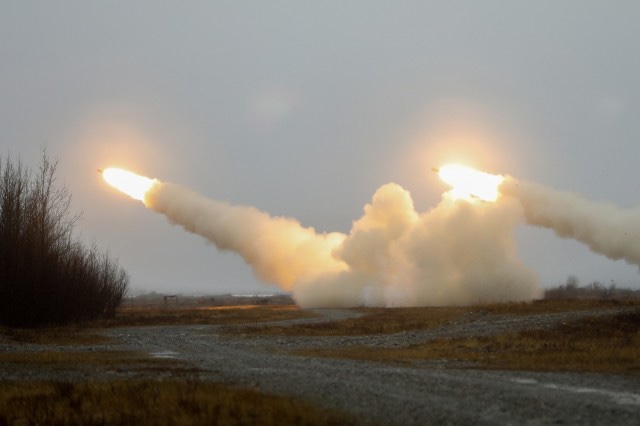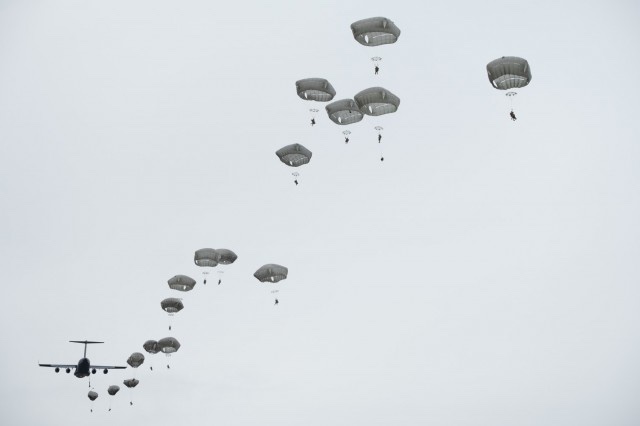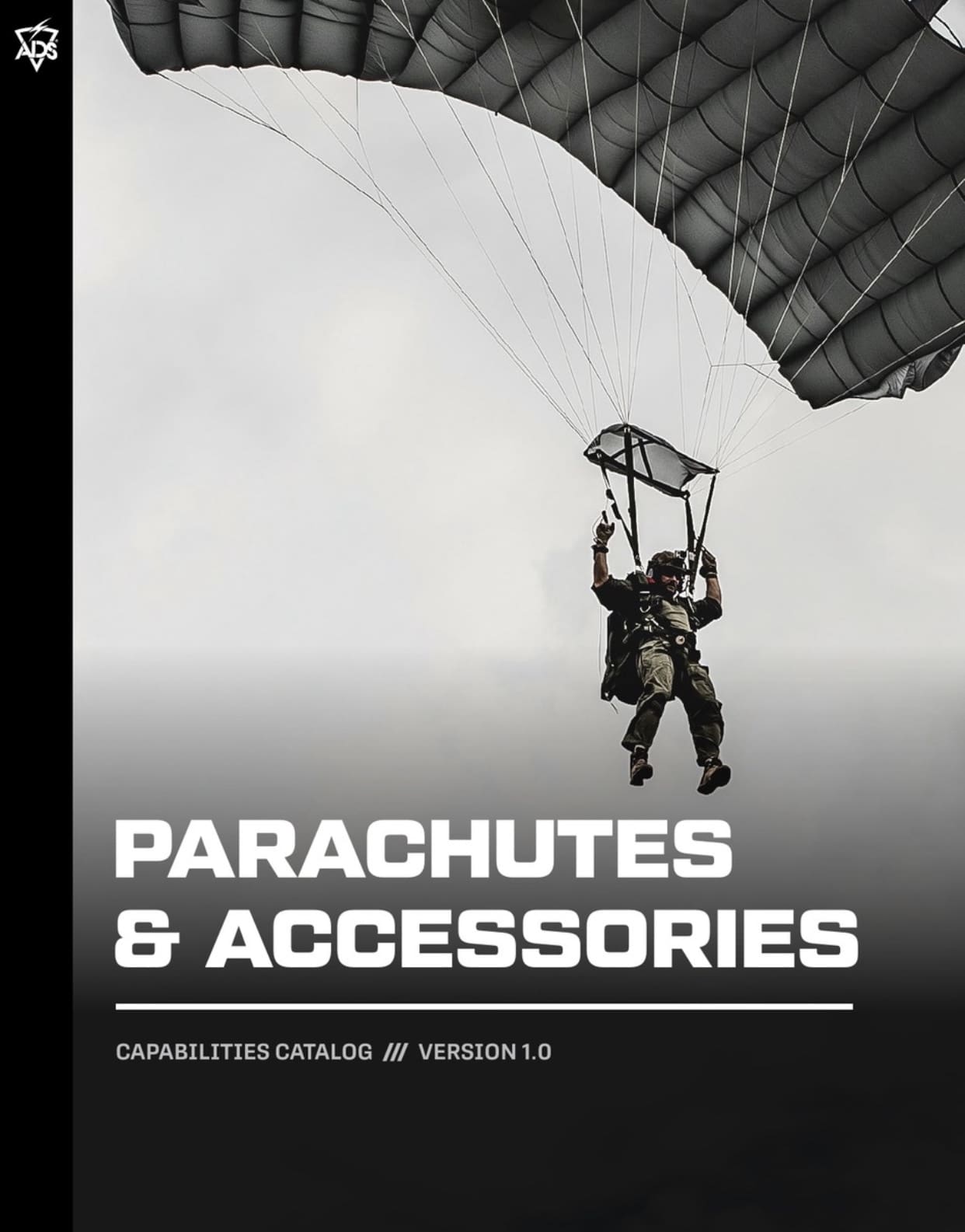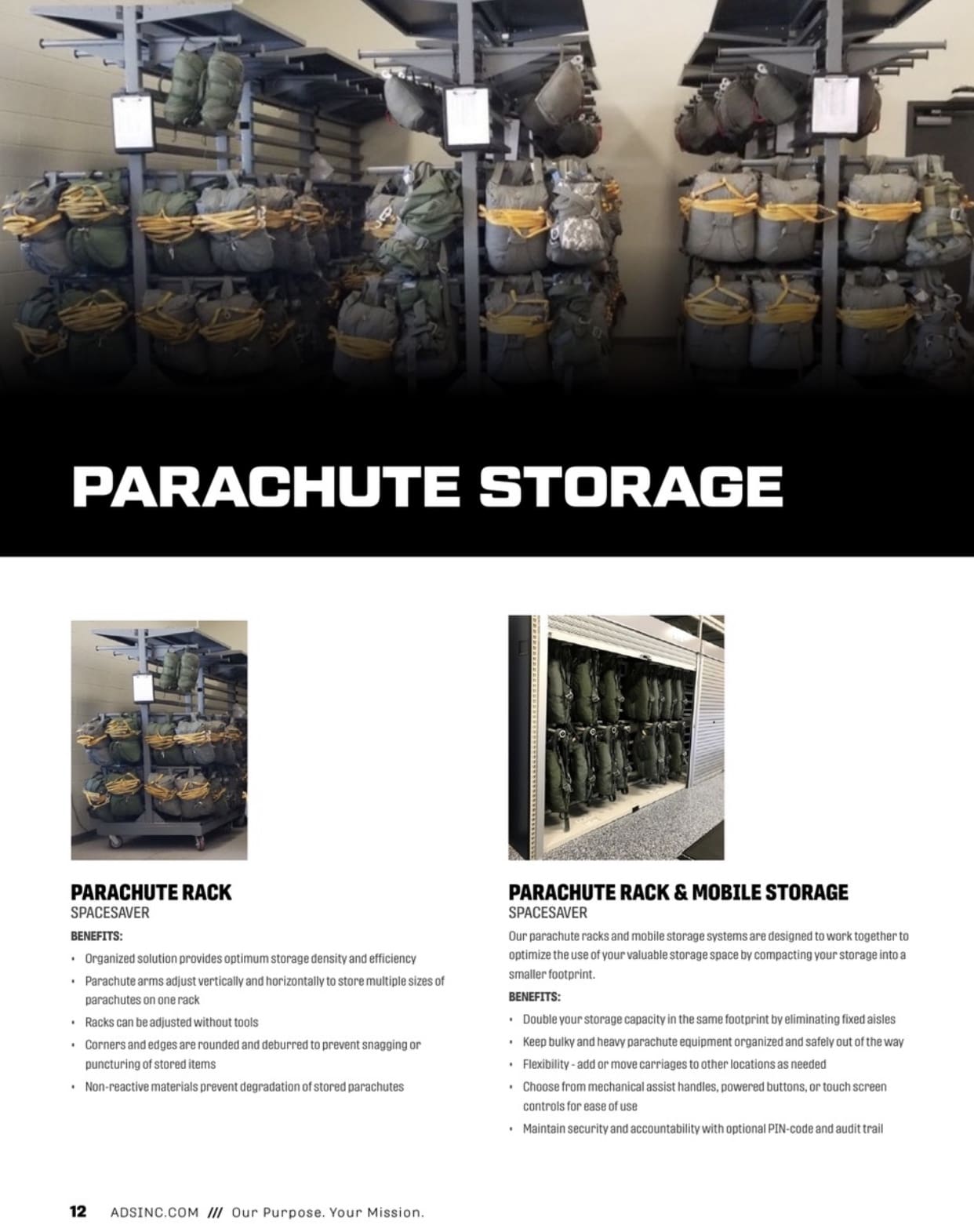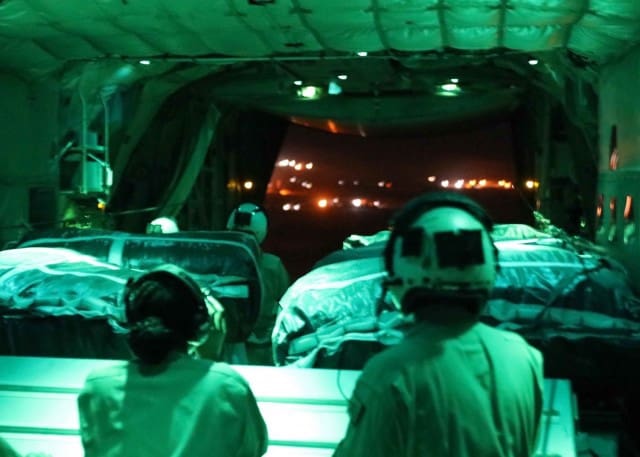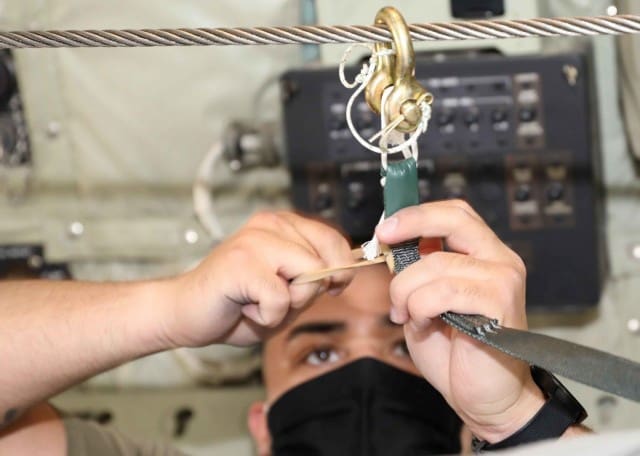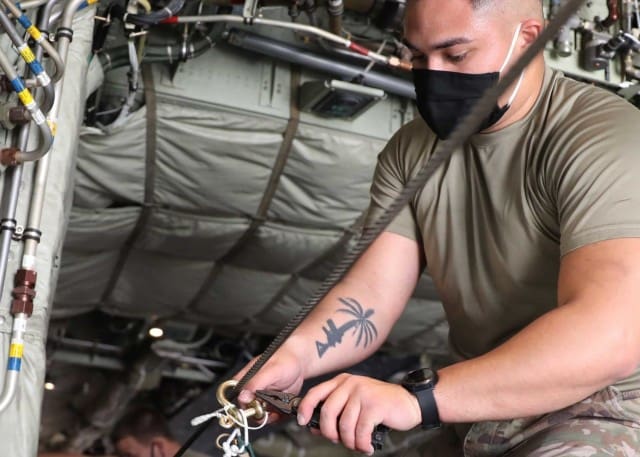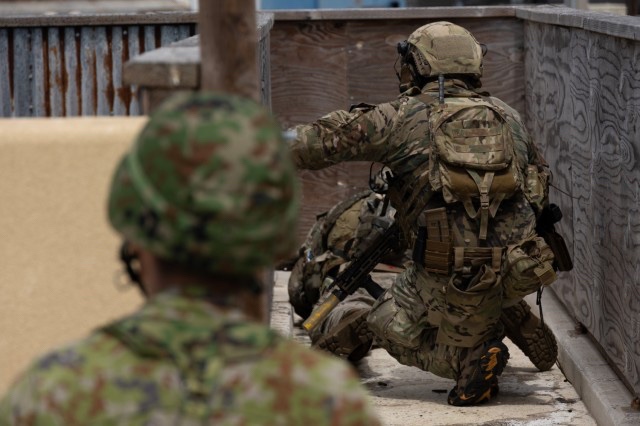
GUAM — Two C-130s launch from Yokota Air Base, Tokyo, into midnight darkness on course to deliver airborne personnel with U.S. Army Special Forces and the Japan Ground Self-Defense Force members to Guam.
History is being made as Green Berets with 1st Battalion, 1st Special Forces Group (Airborne), and members of JGSDF, execute their first bilateral airborne operation outside of Japanese territory. On board, both units know well the commands and procedures that lead up to exiting a high-performance aircraft.
The operation begins with a call from the drop zone control party. The pilots check in and wind calls are made. The JGSDF exits on first pass with the Type 13 parachute. On second pass, special operations forces exit with the steerable MC-6 parachute. Directly below is a flight line—which guarantees a hard landing—and grass off to the sides.
On July 30, 2021, a Special Forces Operational Detachment-Alpha (ODA) assigned to 1st SFG (A) and approximately 80 members with JGSDF conducted bilateral operations in Guam as part of Defender Pacific 21.
DP21 is a U.S. Army Pacific exercise designed to operationalize the national Defense Strategy through realistic, iterative training across all domains—land, sea, air, cyber and space.
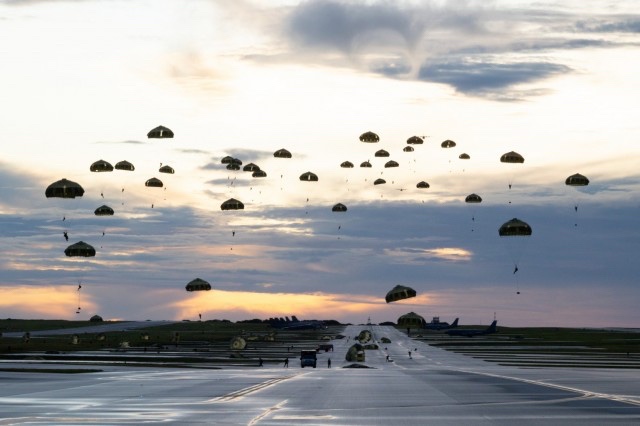
Following the airborne infiltration, U.S. Special Forces and the JGSDF conducted an air assault in vicinity of their first objective near Naval Base Guam, said the Special Forces ODA team leader assigned to 1st Bn., 1st SFG (A). After destroying the first objective, which were anti-air weapon systems, the bilateral force reconsolidated and moved toward their follow-on mission.
Thirty-six hours elapsed from when mission planning started to when the second objective — an enemy command and control node — was destroyed.
Despite tropical heat, humidity and lack of sleep, the bilateral force conducted a high-performance mass-tactical airborne operation and executed two targets with zero major injuries, said the team leader. The airborne operation sends a clear message that the United States and Japan share a commitment to freedom and security and can employ a combined force in support of these principles.
“This experience provided valuable insight into JGSDF capabilities and maneuver techniques; giving insight into how we can better support their operations in the future,” he continued. “Furthermore, this operation allowed the team to create valuable relationships with JGSDF [members] and leadership that will serve as the foundation for future bilateral operations.”
Throughout the operation, the ODA team leader made sure bilingual Green Berets and JGSDF members were placed strategically in the formation to ensure communication and commands were understood.
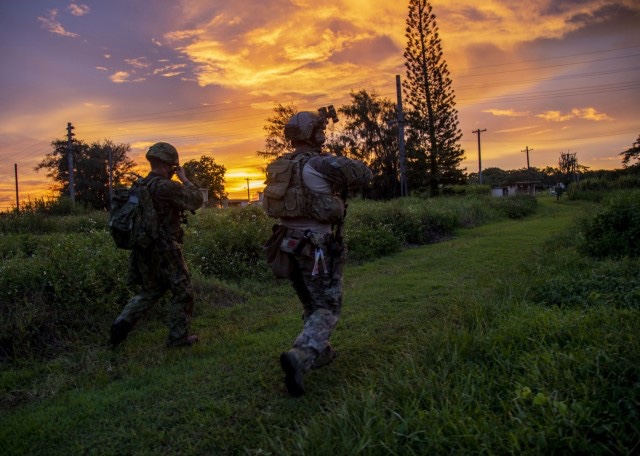
“Joint operational capability is important for us to defend [Japanese] territory,” said Capt. Ryosuke Taki, lead U.S.-Japan bilateral operations planner for JGSDF.
For six months, Taki coordinated with the JGSDF and 1st SFG (A) on making this training opportunity a reality.
“I had to overcome many obstacles to accomplish this mission,” he said. “As far as airborne operations go, [U.S. Army] uses many words we don’t know. Language sometimes [created] misunderstandings making coordination difficult…[however,] our members wanted to coordinate with 1st Special Forces Group.”
“Special Forces are experts in military freefall and close-quarters combat, as well as static-line jumps,” Taki said. “We have more lessons to learn from their rich experiences.”
The Indo-Pacific region is the most consequential theater on the planet and DP21 provides opportunities necessary to create, refine, and deploy new options and solutions for the challenges our nation, allies and partners face. This exercise anticipates requirements to support regional alliances and the existing security architecture to exploit opportunities.
By Anthony Bryant


